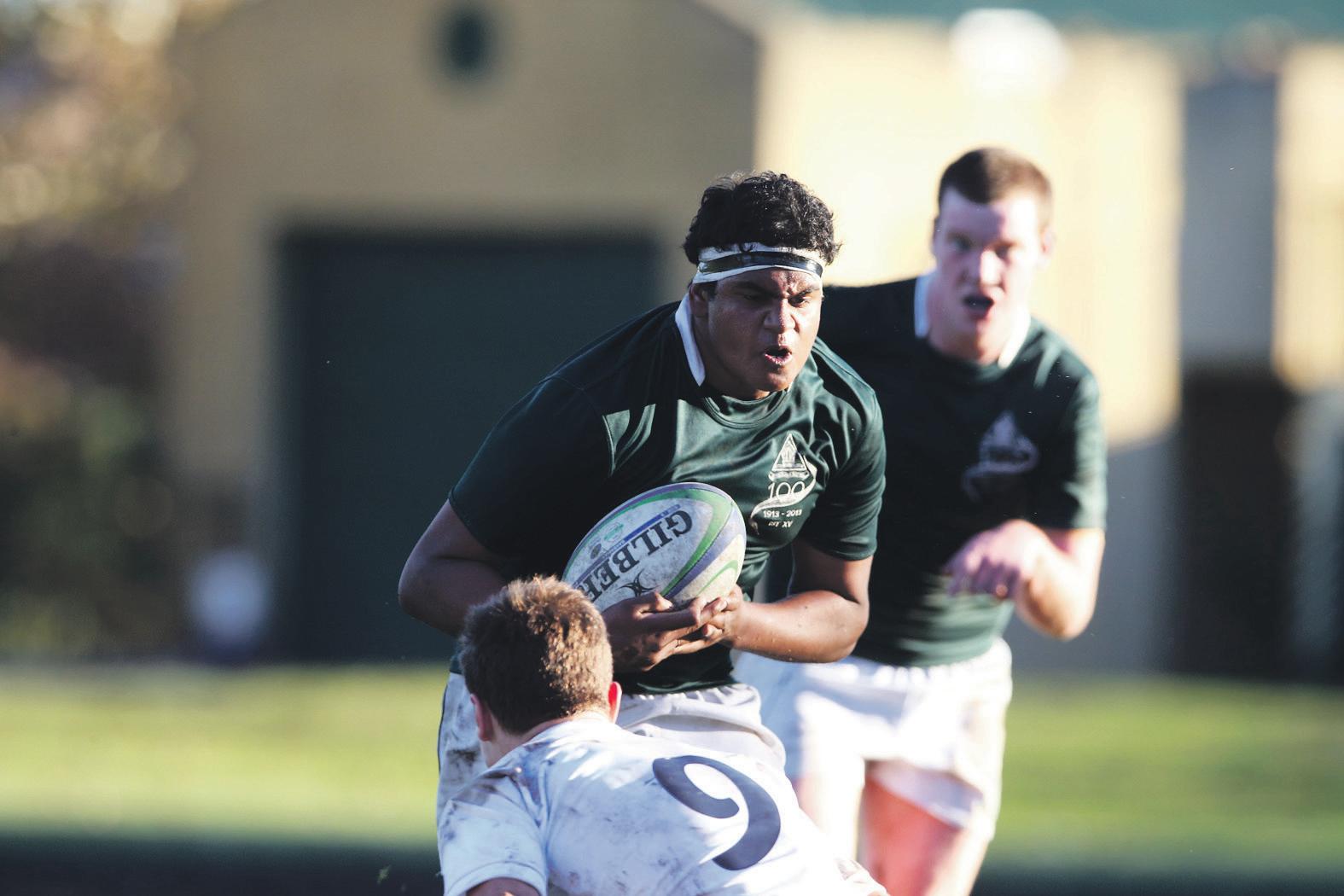
3 minute read
Looking beyond
from 2013-08 Melbourne
by Indian Link
By RAJNI ANAND LUTHRA
hen Trevor Banerjee arrived in Australia ten years ago as an international student, he found himself drawn to Aussie Rules Football. He thought at first it was because his extensive basketball and soccer experiences were giving him an advantage on the field. While that may have been true, he soon realised that what the sport was offering him, was a platform to connect with the mainstream community.
“There is an essential yaarana about AFL that I simply love,” he says. “It’s called ‘shepherding’: I have the ball, and if someone tackles me, my guys will protect me. On the field, your differences dissolve; you look after others like your own brothers”.
He got so involved with the game that he played in the 2011 AFL International Cup, pitching in as a local for a team from India, the Indian Tigers, that did not have enough numbers. That experience urged him to want to launch a community team, to initiate Indian-Australians into the game.
Indians for AFL? You must be joking!
WHe got no support from the Indian community. No one will be interested, he was told; there will be no players, and no sponsors.
Today, his Masala FC is not only up and running, but has been winning games, attracting sponsorships and drawing players. Its players come not only from the subcontinent but also from Zimbabwe, Afghanistan and Russia. A junior team is on the cards, and Banerjee’s dream is that one day there will be a women’s team in the club.
“When I tell an Australian that I’m a part of an AFL team, there’s a sparkle in their eye which is priceless,” Trevor says.
Sport can indeed be an effective tool to help migrants integrate into society.
Contact sports have never had a large following among Indiansunless the traditional kabaddi can be considered one! But times are changing, with the mass appeal of these rubbing off on migrant Indian communities in Australia and New Zealand. South Asianorigin players are taking to AFL, Rugby Union and Rugby League at the lower levels like never before, and while we still wait for one of us to make a mark with the Baggy Green, who’s to say a footy or rugby player doesn’t get there first? Hey, if Chinese-American Jeremy Lin could excel at the National Basketball League…
It might be a thing of the past to say that Indians lack the physique for these sports.
Sport administrators have themselves begun reaching out to multicultural communities like never before.
A number of clubs are approaching the Indian community with opportunities to engage with their particular leagues.
AFL’s Essendon Football Club for instance is focussing on the north-west of Melbourne which has a sizable Indian population, with Dyson Heppell as its Indian Ambassador. It entered an Indian team in this year’s Unity Cup, which focuses on strengthening ties with Police, Muslim and other CALD communities through a mutual appreciation of Australian Rules football. The ‘Bharat Bombers’ won two out of their four games.
Richmond has defender Bachar Houli, a practising Lebanese Muslim, as its Multicultural Ambassador.
Other clubs have specially appointed multicultural development officers or community engagement officials to design programs to deliver specific outcomes to targeted communities.
Even smaller scale token efforts are making a mark, such as AFL’s invite to Bollywood actor Vidya Balan when she was in Melbourne earlier this year, to present the match ball to the referees before the start of a game. (She did so in a bright red sari with a backless blouse, the chill in the air notwithstanding. She admitted she was not familiar with the game at all, but that she was looking forward to the “eye candy”).

And in the midst of all these efforts, we have individual members of the community shining forth with flashes of brilliance, at various levels of the game. While some are starting to push through and make a mark, others are impressing simply with their passion and commitment to a game they did not know growing up, but have since embraced.
And in all of them, the lifting of the gaze away from the allpervading cricket ball, to try a differently shaped one, is truly commendable.
Representing Australia in the Universities World Cup
Jason Ram is about to reach a milestone in his Rugby League career. Next year, he will have played for 25 straight years. And he is only 29 years old.
“If my body is still holding, I will definitely consider going further”.
Jason’s family moved to Sydney from his native Fiji when he was five years old. He had already been introduced to the game by an uncle who represented Fiji in Rugby Union. But when he saw his first game here in Australiathe Cronulla Sharks were playing - he was hooked.
Andrew Ettinghausen has been a lifelong hero.
“His speed and ability, those length-of-the-field tries, were something I wanted to replicate”.
In 2008, Jason represented Australia in the Universities’ World Cup as a Sydney Uni student, and this urged him to try out for Fiji’s national team. He









